目次
Craft Report
Over 100 Years of Tabi-Making: A Traditional Industry Rooted in Kurashiki.
Kurashiki City, Okayama Prefecture—nestled in the calm natural surroundings of the Seto Inland Sea, this town has long preserved both industry and tradition. Here, Marugo Co., Ltd. has been at the center of Japan’s tabi (split-toe footwear) industry.
In 1919, Itarō Fujiki, head of the Fujiki family, developed the “stitched tabi boot,” created by sewing rickshaw tires onto fabric tabi, and founded the company. As a pioneer in work shoes, Marugo has supported the feet of countless people for generations.
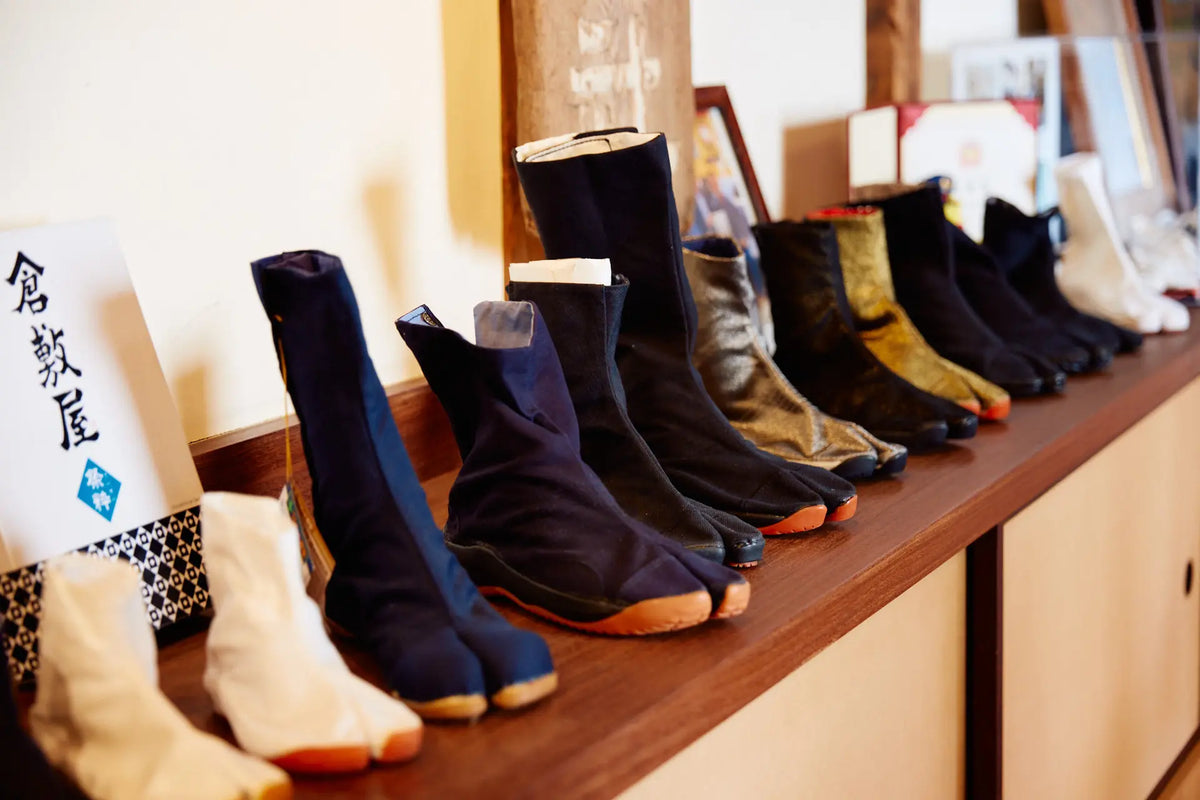
A collection of tabi crafted by Marugo over the years.
Today, with flagship stores in Kurashiki’s Bikan district and in Tokyo, Marugo is reimagining tabi beyond their traditional role as workwear—proposing casual, stylish, and health-oriented designs to a broader audience, including those who have never worn tabi before.

For instance, the “coppelia lily,” with its rounded, simple design, is a tabi-inspired flat shoe that women can wear elegantly in daily life, inspired by the world of classical ballet. Marugo now offers a wide range of tabi, having established a Wellness Division over 10 years ago. This division develops tabi not only for business and daily use, but also for rehabilitation and sports, aiming to promote health through footwear.
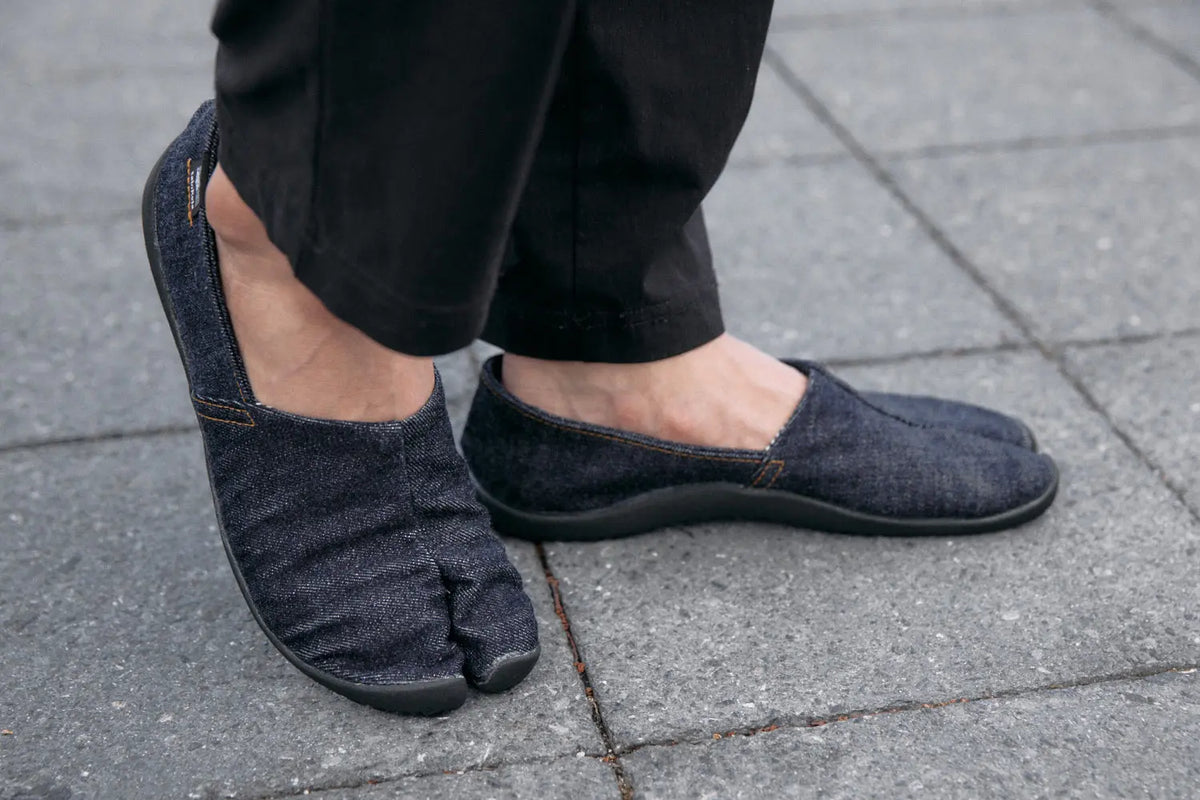
The tabiRela series, for example, is a line of comfort shoes designed to give the barefoot-like sensation of gripping the ground. Made with local Kurashiki canvas, they encourage natural use of the toes and soles, helping alleviate foot pain, bunions, and other issues.
Health Starts with Information from the Ground.
We spoke with Mr. Hatome, head of the Wellness Promotion Division. Though his career began in the construction industry, since joining Marugo he has dedicated himself to sharing the comfort and benefits of tabi with the wider public.
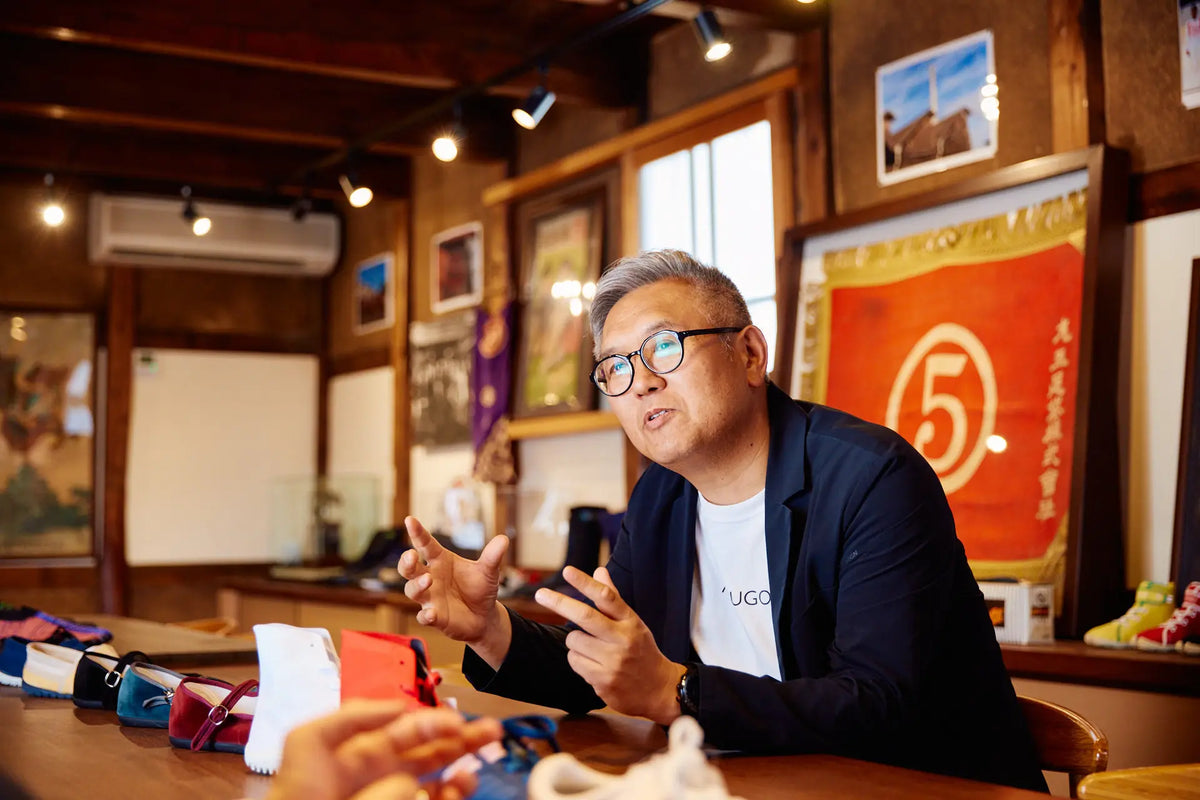
Mr. Hatome, energetic throughout the interview, reflecting his background in the construction industry.
According to Hato, the beauty of tabi lies in their thin soles, which allow the toes to move freely. Workers performing high-altitude tasks rely on the sensory feedback from their soles to maintain balance—made possible because tabi sharpen the foot’s sensitivity.
Hato continues to explore ways to apply these benefits across fields, such as athletes using tabi during training or for recovery after practice. By fitting closely to the foot and allowing near-barefoot walking, Marugo’s tabi help unlock the body’s natural strength. This philosophy of prioritizing user comfort and foot health is evident throughout their manufacturing process.
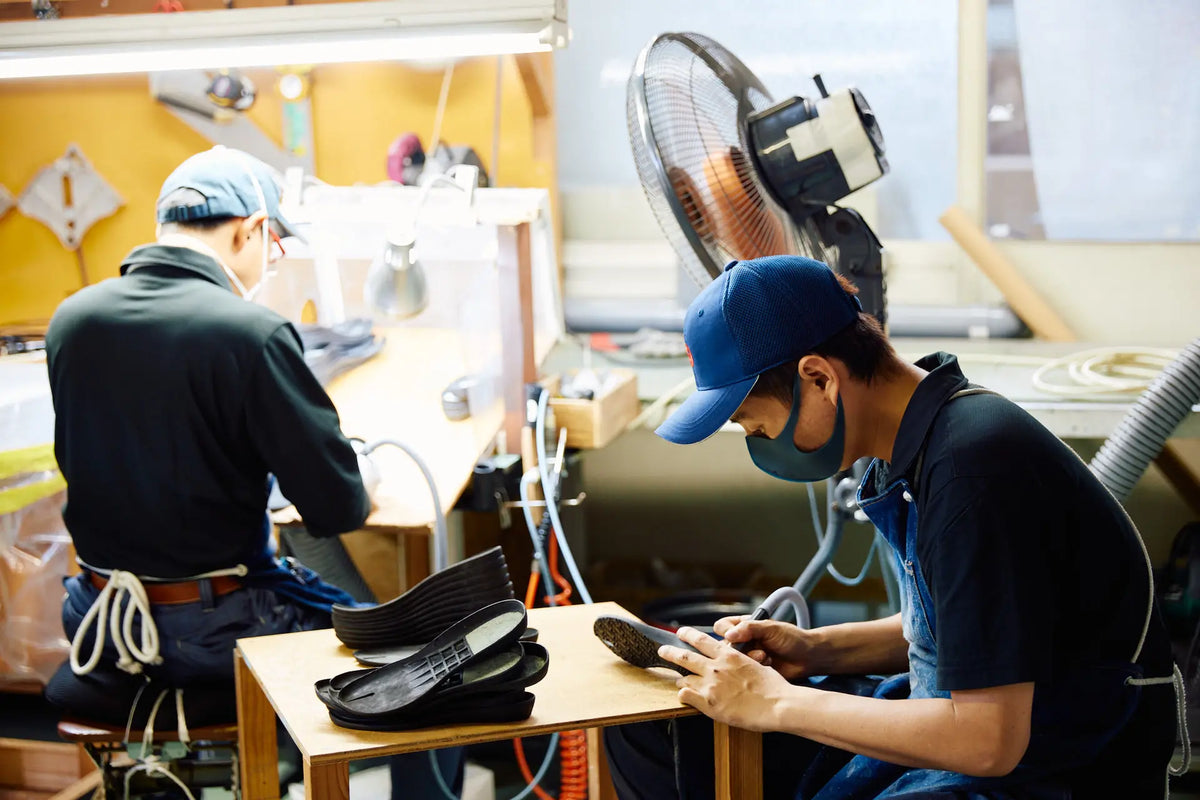
Craftsmen finely adjust the shape of the sole’s rubber by hand.
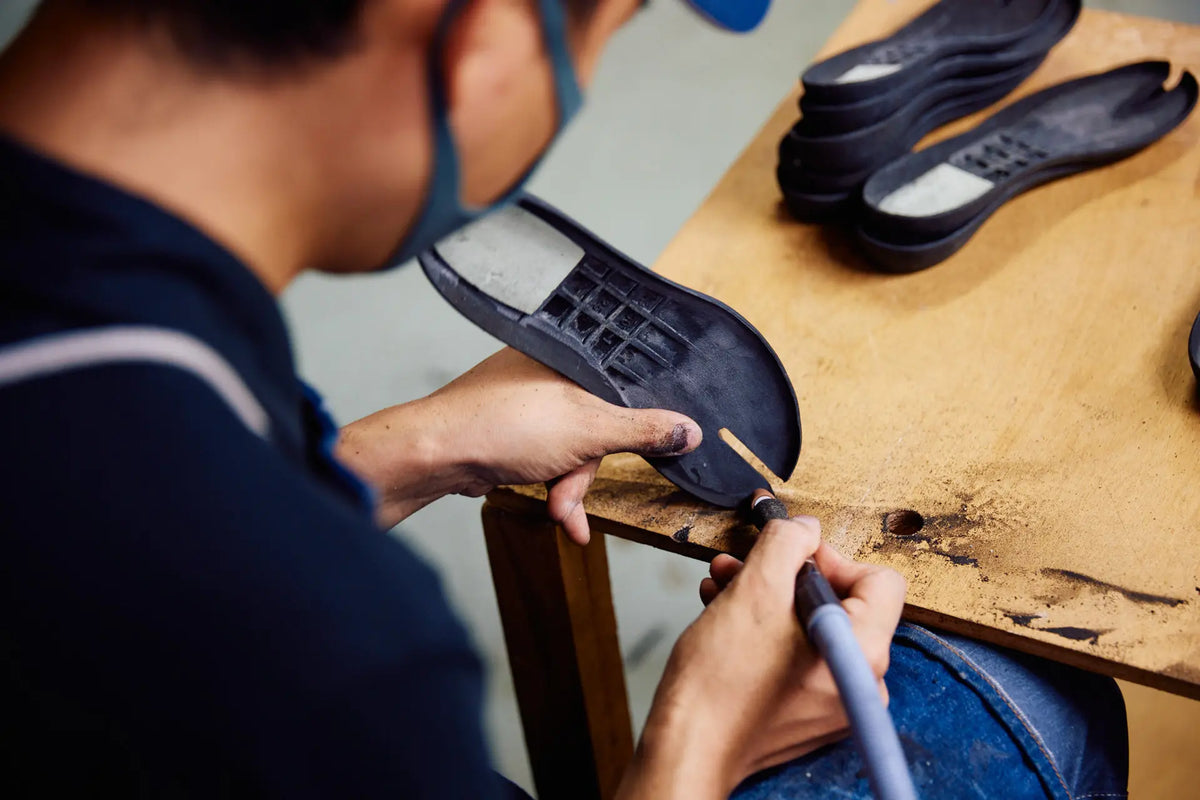
Marugo designs its own lasts and tools, and sets strict quality control standards for each process. Rather than relying solely on automation, artisans refine subtle shapes by hand—decisions that directly influence comfort and health.
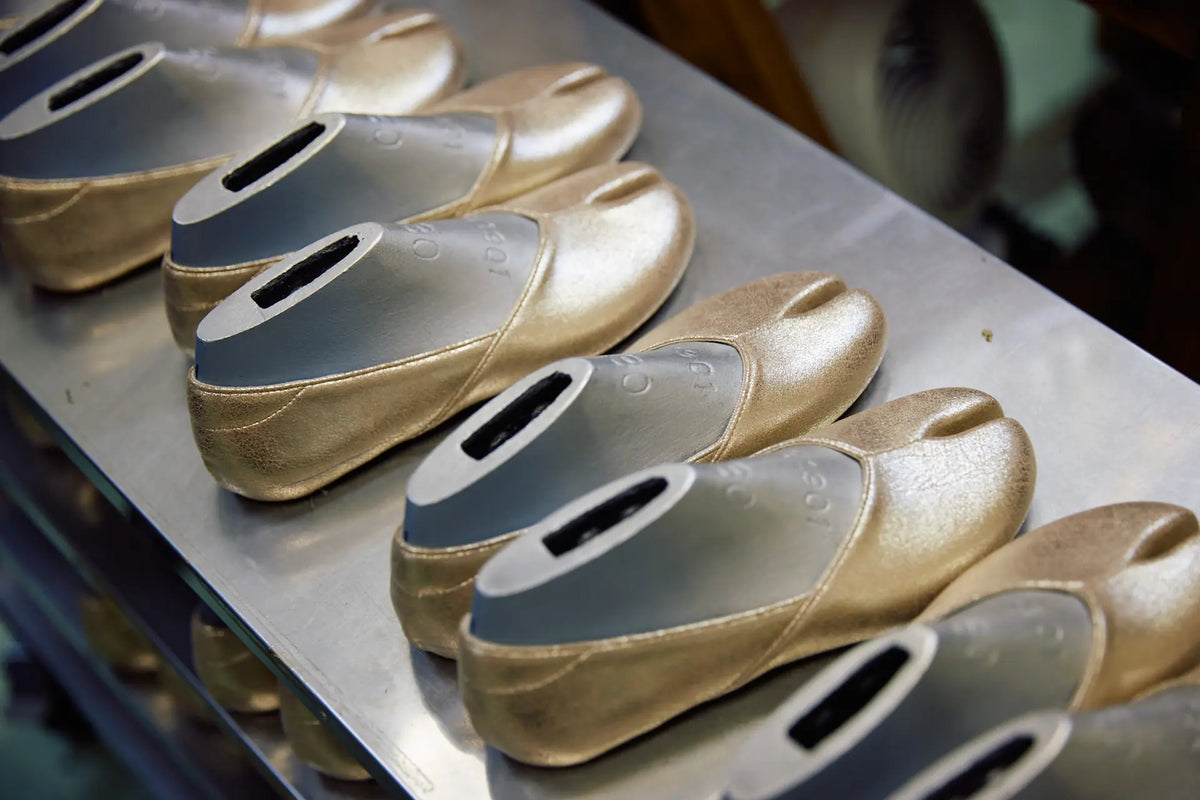
The number of molds grows enormous when considering all product variations and sizes.
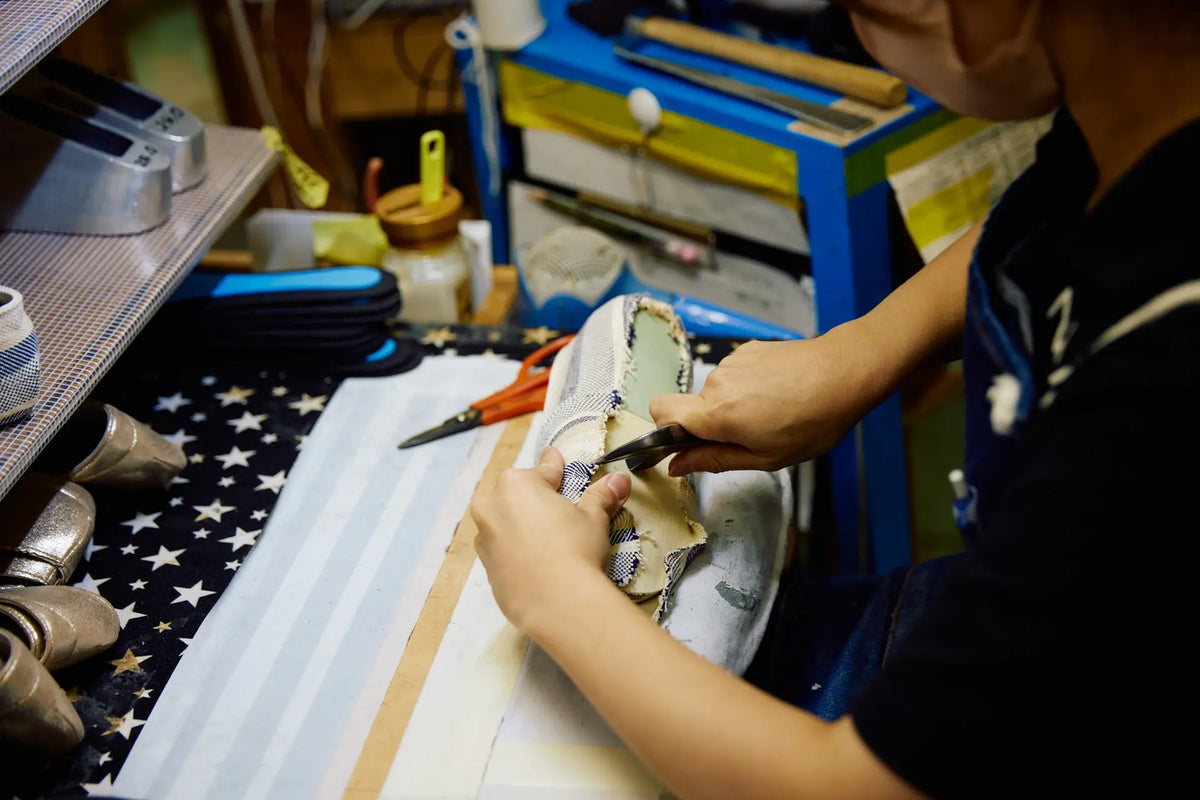
The labor-intensive process of pulling and pasting fabric over the shoe form—mastery takes years.
At in-store trials, nearly 70% of customers purchase tabi immediately, and many become repeat buyers, replacing all of their footwear with Marugo’s products once they experience the comfort.
Getting More People to Wear Tabi.
When asked about future challenges, Mr. Hatome offered a surprising answer: “We’re developing shoes that look like regular footwear on the outside, but are split-toe on the inside. They won’t look like tabi, but they’ll let people experience their function.”
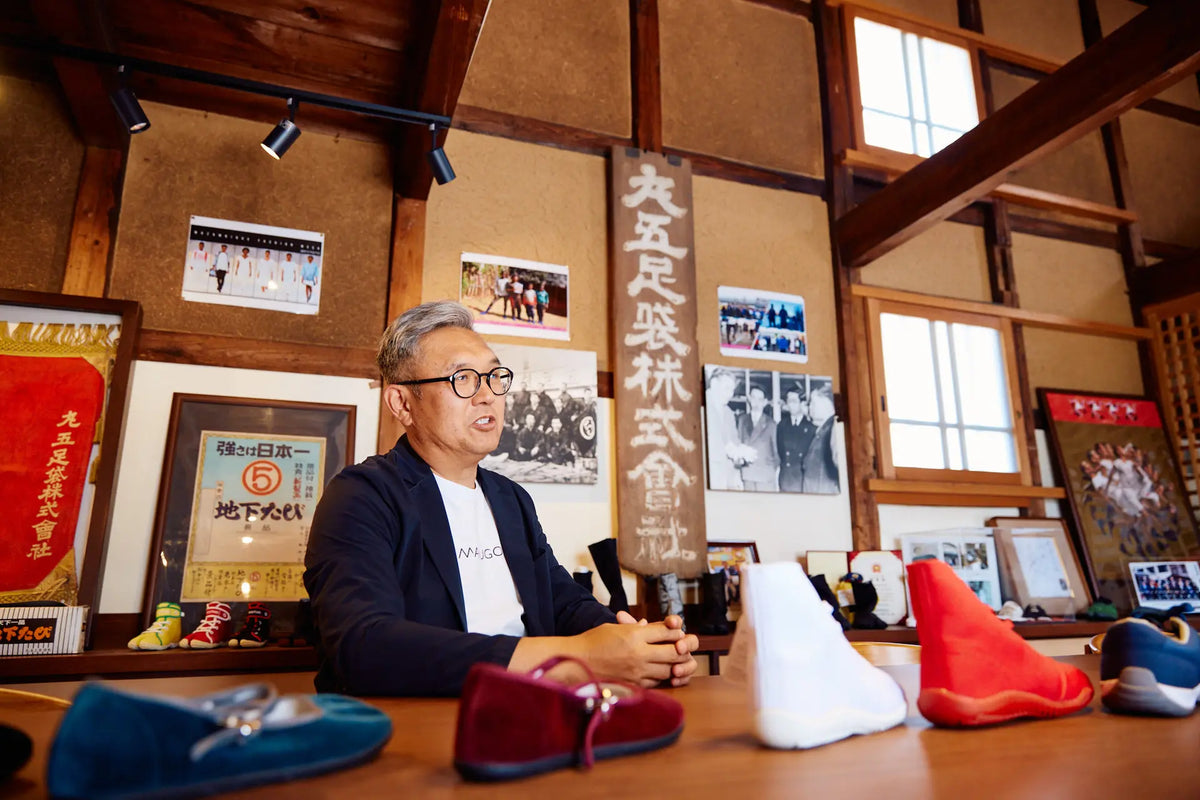
To spread tabi culture, more opportunities are needed for people to try them. One major barrier is the visual impression of the split-toe design. Hato’s idea addresses this issue directly: proposing function without insisting on traditional form. It’s a bold idea, made possible because Marugo has full confidence in the benefits of tabi.
From Hato and the other craftsmen at Marugo, it’s clear that their mission is to focus on people’s feet—constantly researching new styles of health-oriented footwear. Their efforts are already reflected in the wide range of products and designs available today. Looking ahead, it’s easy to see tabi expanding beyond their roots in the worksite to become beloved by people in all walks of life.
Interview, photography, and text: Morishita Daiki





